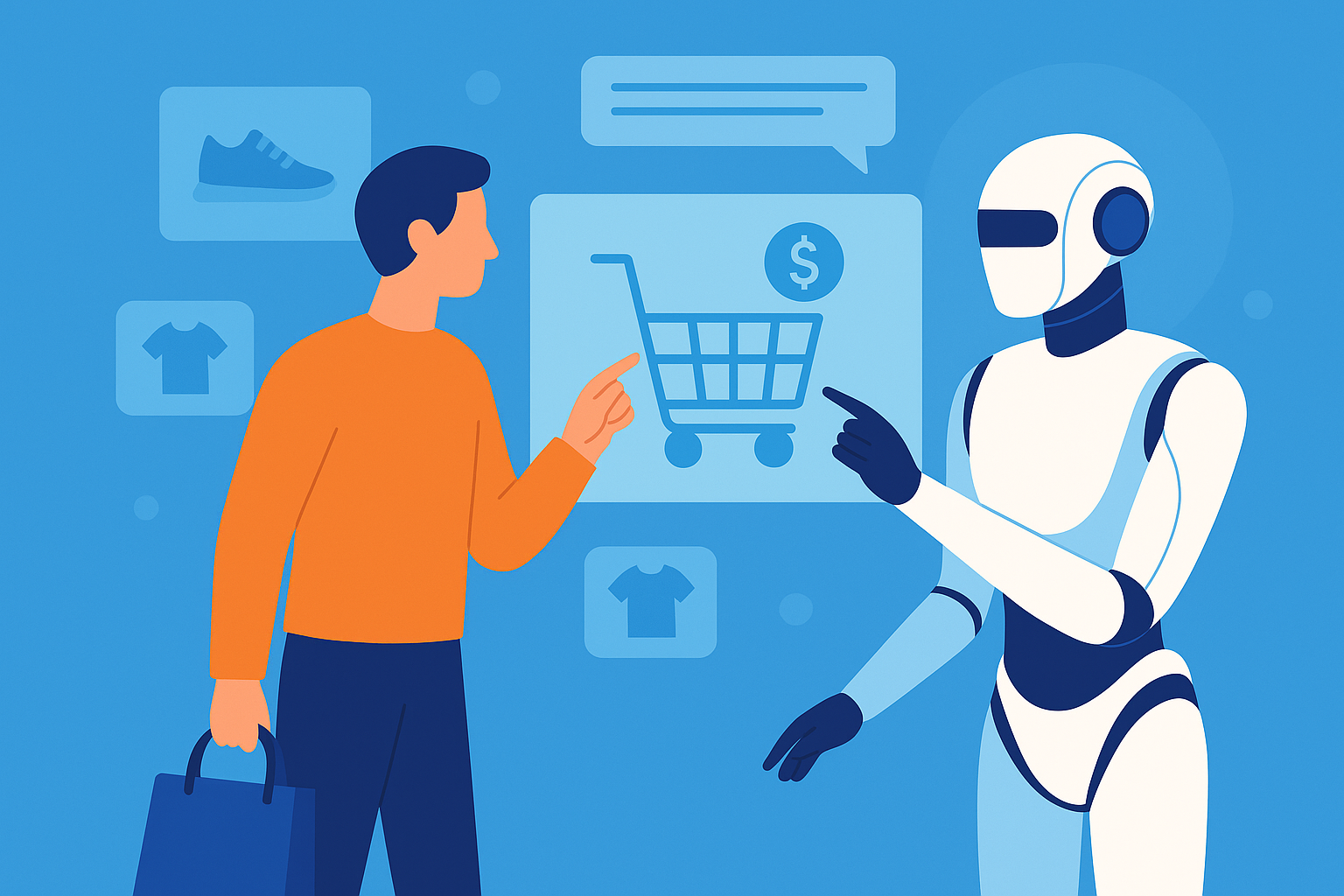This article was created with the assistance of AI.
It contains the author’s own research, thoughts, and opinions on AI-related news topics of interest.
The opinions expressed are solely those of the author.
1. What the Walmart × OpenAI Partnership Means
On October 14, 2025, Walmart announced a partnership with OpenAI and the adoption of the “Instant Checkout” feature.
Instant Checkout allows users to search for products within ChatGPT and complete the entire purchase process without leaving the chat.
While the initial rollout was limited to Etsy and Shopify, Walmart’s participation signals that more retailers and brands will likely join in the near future.
🔗 Walmart partnership coverage
2. Core Technologies Enabling Agentic Commerce
2.1 Agent Payments Protocol (AP2)
The first major step came from Google, which introduced the Agent Payments Protocol (AP2) — an international technical standard that enables AI systems to make payments on behalf of humans.
Major payment providers like JCB, Mastercard, and PayPal are participating in establishing a shared framework for safe AI-driven transactions.
Users can issue digitally signed mandates such as “authorize this AI to spend up to ¥○○,” preventing unauthorized or unlimited purchases by the AI.
🔗 Official announcement by Google
2.2 Agentic Commerce Protocol (ACP)
Following that, OpenAI and Stripe jointly developed the Agentic Commerce Protocol (ACP) — a standard that covers not only payment but also product selection, cart creation, ordering, and shipping coordination.
ChatGPT’s Instant Checkout feature is built on ACP, enabling users to find, confirm, and purchase products seamlessly within the chat.
🔗 OpenAI official announcement
🔗 Domestic coverage (PR TIMES)
3. The Growing Use of AI Shopping
Although Agentic Commerce is still in its early stages, AI-assisted shopping is already gaining traction among consumers.
Most examples come from the U.S., but the following reports are illustrative:
- According to Salesforce’s Connected Shoppers Report, 39% of consumers already use AI to discover products, and over half of Gen Z shoppers use AI tools.
- An eMarketer survey found that 65% of consumers want AI to make purchases automatically once prices reach their target.
However, only 47% want to give full control to AI, showing a desire for final confirmation.
Only 24% said they’re comfortable sharing personal data with AI tools, highlighting ongoing privacy concerns. - Research by Kearney found that a majority of U.S. consumers are now interested in using AI shopping agents.
It identifies four segments: tech enthusiasts, price-driven buyers, privacy-conscious users, and brand loyalists.
These findings indicate that AI-driven purchasing behavior is spreading beyond tech-savvy users to mainstream consumers.
4. Challenges of E-Commerce and How Agentic Commerce Addresses Them
The evolution of online retail overcame numerous challenges — from security and trust to user experience and dispute handling.
Agentic Commerce (AI-based purchasing) must address similar issues in its own way.
Past Challenges | Improvements through AI (Agentic Commerce) | Remaining Concerns |
|---|---|---|
① Security risks (credit card leaks, unauthorized access) | Enhanced safety via AP2’s signed mandates and tokenization | Unclear boundaries on how much personal data AI can access; risk of data leaks during AI-to-AI communication |
② Product reliability and quality gaps (misleading reviews, inaccurate listings) | AI summarizes and surfaces trustworthy reviews | Risk of AI hallucinations or biased recommendations |
③ Complicated procedures / poor UX | Seamless in-chat purchasing with natural-language confirmation (ACP) | Over-automation may cause insufficient verification or mistaken orders |
④ Burdensome returns and dispute handling | AI assists with return requests and shipment tracking | Ambiguity over responsibility — retailer, AI, or platform? |
⑤ Fraudulent or unverified sellers | ACP restricts transactions to verified merchants | AI could still mistakenly recommend uncertified sites; human oversight remains essential |
5. Future Outlook and Japan’s Market Trajectory
5.1 Will Amazon Build Its Own Agentic Commerce with “Rufus”?
While Walmart expands AI-based shopping through OpenAI’s ChatGPT,
Amazon is developing its own path with Rufus, its in-house AI shopping assistant.
Introduced in 2024, Rufus provides conversational search, comparison, and purchase support directly on Amazon.
Frequent Amazon users may have already tried it — for example, asking “Find me a beginner-friendly gaming PC” brings up personalized product suggestions.
This move leverages Amazon’s key strengths:
- Vast product and review database
- Integrated payment and logistics network
- Deep consumer insights through Prime membership data
As the dominant e-commerce platform, Amazon has little incentive to outsource its shopping experience to external AIs.
Thus, it is likely to continue embedding AI agents within its own ecosystem.
5.2 Japan’s Market Outlook
In Japan, Amazon, Rakuten, and Yahoo! Shopping remain the top three players.
Whether they will embed their own AI agents into their ecosystems, like Amazon, or adopt systems such as Instant Checkout remains to be seen.
5.3 Conditions for Adoption and Psychological Barriers
Even if the technology is ready, mainstream adoption of AI shopping depends on overcoming two key psychological barriers:
- Trust and Transparency
- The system must prevent perceptions of “unauthorized purchases.”
- Clear visibility into confirmations, returns, and order history is essential.
- Balancing Automation with the Joy of Shopping
- Some users value the thrill of finding “hidden gems” themselves.
- To appeal broadly, AI should act as a co-helper, not a replacement, enhancing the shopping experience rather than taking it over entirely.
The evolution of AI shopping will hinge on how well AI and human decision-making can coexist — a trend worth watching closely in upcoming news.
